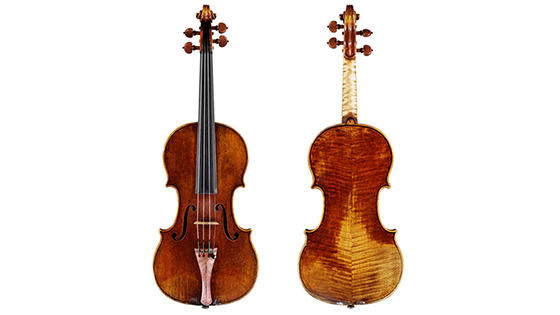By Richard Brooks: In the early 1980s, I was playing first violin in the Danbury Symphony Orchestra, a volunteer community orchestra in southwestern Connecticut. One night, at the usual Monday rehearsal, I was moved up to sit on the first stand with the orchestras Concertmaster. His name was Julian Altman and he was a rather elderly man who had recently moved to the area and was apparently a very competent and seasoned violinist who had played in a few professional orchestras and in nightclubs.
At some point during the evening, there was a break and he asked me if Id like to play his violin. It looked old and kind of grimy, but I felt the need to appease him, so we traded violins for a little while. I noodled a little on it and played it in the rehearsal for a short while. I didnt notice anything remarkable about the old mans instrument and was happy to hand it back to him and reclaim my own violin.
A few years later I read a disturbing story in the local newspaper. Julian Altman was on trial for sexually molesting his own 6-year-old granddaughter. The sordid story of an alcoholic, gambling, womanizer was followed in the local media and Altman was eventually convicted and sentenced to prison. My life went on and I hadnt thought much of old Julian Altman when, a few years later, I read of his death from cancer while he was serving time.
Here the story took a rather fascinating turn. Apparently, on his deathbed in 1985, Altman had told his wife to take good care of his beloved violin and had told her to look inside the case. When his wife got around to opening the case, she made a startling discovery. Inside were old, yellowed, newspaper clippings about the theft of a 1713 Stradivarius violin from a concert violinist named Bronislaw Huberman at Carnegie Hall in 1936.
![Strad]()
The 1713 "Gibson, Hubermann" Stradivari violin.
Altman had told his wife hed purchased the violin for $100, but it was pretty clear that he had, in fact, stolen the instrument from Hubermans dressing room while the violinist was on stage performing on his other instrument, a 1731 Guarnerius violin.'
I chuckled to myself with the realization that I had spent a few minutes playing on what turned out to be a valuable violin by the Cremona Master and named The Gibson because of its early previous owner, an English violinist named George Alfred Gibson. Altman had apparently used shoe polish to discolor the instrument and hide the unique varnish which would have revealed its origin and identity to any violin maker or repairman with any knowledge of valuable instruments.
In 2001, the story took a further twist when I read that the famous violin had been purchased by virtuoso Joshua Bell for just under 4 million dollars. Lloyds of London, which had paid the insurance claim to Hubermann, had purchased the instrument from Altmans wife for a finders fee of $263,000 and subsequently sold it to a violinist from the Amadeus String Quartet, Norbert Brainin for $1.2 million. Bell had played on it and felt a strong connection, partially because of the instruments reddish varnish and his own work on the 1998 film entitled The Red Violin. Bell has concertized and recorded on the now renamed Huberman Stradivarius ever since.
So that was my one and only experience with a genuine Stradivarius violin. Ive often had people approach me in the past with violins they found collecting dust in their attic which had the words Stradivarius or Stradivari inscribed somewhere on or in them. Ive made a practice of dismissing them with the explanation that many modern instruments are patterned after the instruments of the Master and bear an acknowledgement for that reason.
And yet, there is nearly always that lingering feeling that what if theres another genuine Stradivarius somewhere out there, with a story spanning 4 centuries, that has somehow dropped off the grid and been neglected or concealed for a generation or more? But then I reassure myself that its very unlikely and theres no need to contemplate it. I held the real thing and played on it with no idea of its heritage and authenticity. And to this then naïve young man, it was just a moment in time, a faded memory of an old man asking me to try his violin and me being happy to get my own instrument back in my hands.
-Richard Brooks
You might also like:

The 1713 "Gibson, Hubermann" Stradivari violin.